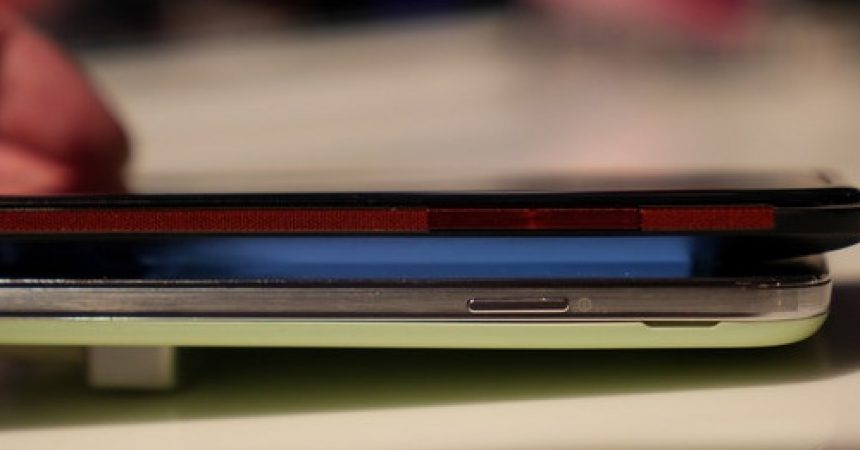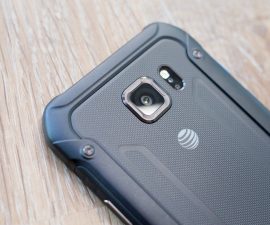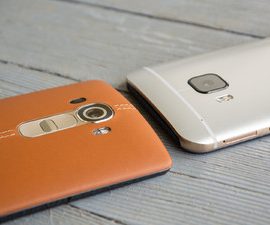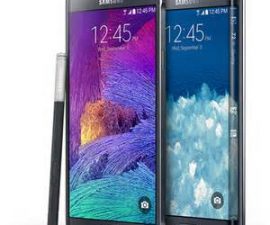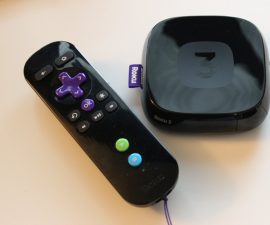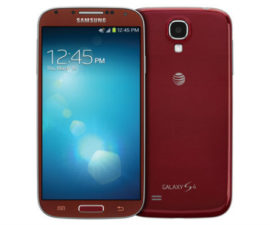Samsung Galaxy S4 VS HTC Droid DNA Review

The Samsung Galaxy S4 has been unveiled in New York and months of rumors and speculations about this newest device in Samsungs Galaxy S smartphone line have come to an end.
One of the device’s highlights is its 5-inch 1080p display. So this marks Samsung’s entrance into the club of the full HD devices. Now, nearly every Android maker has at least one phone that is full HD on its portfolio.
One such Android maker is HTC which announced full HD displays for two devices just a few month prior. The HTC J Butterfly and the HTC Droid DNA both have full HD displays.
In this review, we pit the HTC Droid DNA and the Samsung Galaxy S4 against each other in four areas, display, design and build, internal hardware, and software.
Display
- The display of the Samsung Galaxy S4 is a 4.99-inch screen that uses Super AMOLED technology.
- The Samsung Galaxy S4 display has a resolution of 1920 x 1080 which makes it Full HD.
- Moreover, the Full HD screen of the Galaxy S4 gets a pixel density of 441 pixels per inch.
- The Super AMOLED display of the Galaxy S4 is very crisp and bright. However, as is the tendency with AMOLED technology, the colors are a little too vivid for the color reproduction on the screen to be considered accurate.
- While, the display of the HTC Droid DNA is a 5-inch screen that uses Super LCD 3 technology.
- The HTC Droid DNA display has a resolution of 1920 x 1080 which makes it Full HD.
- The Full HD screen of the Droid DNA gets a pixel density of 441 pixels per inch.
- The Super LCD 3 display of the Droid DNA gets great contrast levels for pixel-free crispness. The color reproduction is also very good.
Verdict: The device with the more accurate color reproduction is the HTC Droid DNA. This makes the HTC Droid DNA the winner here. However, those who are already fans and used to AMOLED technology might still go for the Samsung Galaxy S4.
Design and build quality
- The Samsung Galaxy S4 measures 136.6 x 69.8 x 7.9mm and weighs 130g
- Moreover, the Samsung Galaxy S4’s design takes a lot from the designs of its predecessors.
- The button layout of Samsung remains in the Galaxy S4. There is a home button that is flanked by two capacitive buttons.
- The Galaxy S4 has corners that are less rounded than they were on the Galaxy S3. This makes the Galaxy S4 look like a blend of the Galaxy S3 and the Note.
- The Galaxy S4 is the most compact device compared to the HTC Droid DNA

- While, the HTC Droid DNA measures 141 x 70.5 x 9.7 mm and weighs 141.7g
- The HTC Droid DNA has bold red aluminum accents which are in line with the branding of Verizon.
- HTC has added a rubbery texture to the Droid DNA’s back plate. This makes the DNA easy to use and hold one-handed.
Verdict: The Samsung Galaxy S4 is the most compact device, but it is the Droid DNA that is the better looking one.
Internal Hardware
CPU, GPU, and RAM
- The HTC Droid DNA has a Qualcomm Snapdragon S4 Pro and a 1.5 GHz quad-core Krait CPU.
- The HTC Droid DNA also has an Adreno 320 GPU which is coupled with 2 GB RAM.
- There are two versions of the Samsung Galaxy S4 and each of this two version uses a different processing package.
- Samsung Galaxy S4’s international version: Exynos 5 Octa which has a quad-core A15 CPU and includes a quad-core A7 CPU which is in big. LITTLE configuration.
- Samsungs Galaxy S4’s North America version: Qualcomm Snapdragon 600 CPU with a 1.9 GHz Krait CPU and an Adreno 320
- Both the international and North American version of the Galaxy S4 will have 2 GB RAM.
- Preliminary benchmark tests show that the Exynos 5 Octa of the international version of the Galaxy S4 is faster than the Snapdragon S4 Pro of the HTC Droid DNA.

Internal and Expandable Storage
- The Samsung Galaxy S4 has three options for onboard storage: 16, 32, and 64 GB.
- All three versions also have the option to expand the storage via micro SD.
- The HTC Droid DNA has only one option for onboard storage: 16 GB.
- The HTC Droid DNA has no microSD card slot so there is no option to expand its memory.
Camera
- The HTC Droid DNA has and 8 MP rear camera and a 2.1 MP front camera.
- You can use the front camera of the Droid DNA for video calling.
- The Samsung Galaxy S4 has a 13 MP rear camera and a 2 MP front camera.
- The Galaxy S4 has a larger sensor and better optics. The camera app also has a number of new features that some users will really appreciate.

Battery
- The Samsung Galaxy S4 has a 2,600 mAh removable battery
- The HTC Droid DNA has a 2,020 mAh non-removable battery
Verdict: When it comes to hardware specs, it’s the Samsung Galaxy S4 that is the winner
Software
- The HTC Droid DNA runs Android 4.1 Jelly Bean.
- An update to Android 4.2 is set to happen but there has been no specific date given.
- The Droid DNA has HTC’s Sense 4+ user interface. This design is better than the TouchWiz interface that the Samsung Galaxy S4 uses.
- The TouchWiz does come with several useful software features that you won’t find in the Sense 4+ tough.
- These features include Air View, Smart Pause, Smart Scroll.
Verdict: Because of all its software features, the TouchWiz interface wins this round for the Samsung Galaxy S4.
In the end, both the Samsung Galaxy S4 and the HTC Droid DNA are good specimens of Android smartphones. However, the Galaxy S4 is the device that is not only faster but also more complete and versatile.
On the side of the Droid DNA, it has one of the best displays available and has a great design. It does, however, suffer from a small battery and for not having microSD support.
What do you think? Is it the Samsung Galaxy S4 or the HTC Droid DNA for you?
JR
[embedyt] https://www.youtube.com/watch?v=AFLerUq8nTg[/embedyt]
